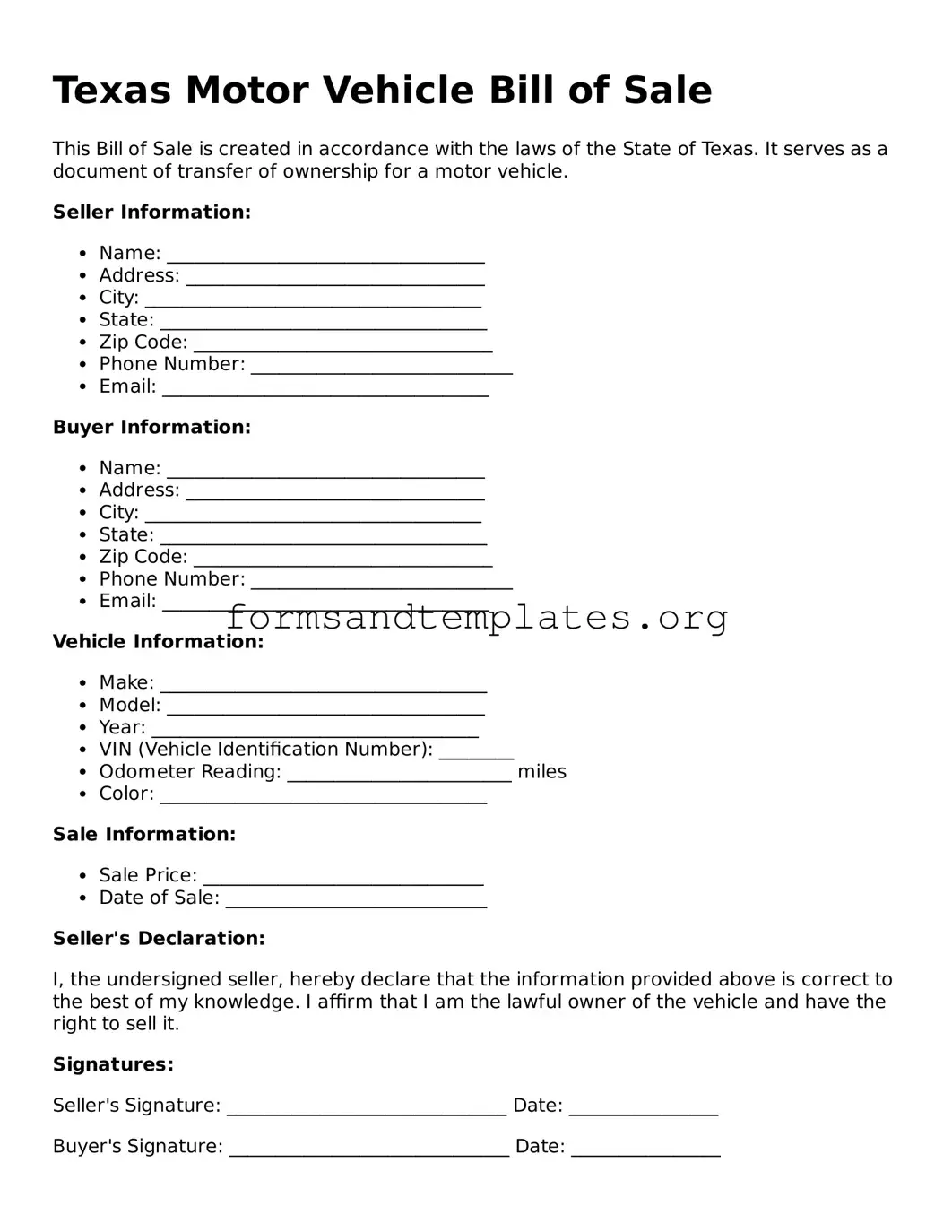Texas Motor Vehicle Bill of Sale
This Bill of Sale is created in accordance with the laws of the State of Texas. It serves as a document of transfer of ownership for a motor vehicle.
Seller Information:
- Name: __________________________________
- Address: ________________________________
- City: ____________________________________
- State: ___________________________________
- Zip Code: ________________________________
- Phone Number: ____________________________
- Email: ___________________________________
Buyer Information:
- Name: __________________________________
- Address: ________________________________
- City: ____________________________________
- State: ___________________________________
- Zip Code: ________________________________
- Phone Number: ____________________________
- Email: ___________________________________
Vehicle Information:
- Make: ___________________________________
- Model: __________________________________
- Year: ___________________________________
- VIN (Vehicle Identification Number): ________
- Odometer Reading: ________________________ miles
- Color: ___________________________________
Sale Information:
- Sale Price: ______________________________
- Date of Sale: ____________________________
Seller's Declaration:
I, the undersigned seller, hereby declare that the information provided above is correct to the best of my knowledge. I affirm that I am the lawful owner of the vehicle and have the right to sell it.
Signatures:
Seller's Signature: ______________________________ Date: ________________
Buyer's Signature: ______________________________ Date: ________________
This Bill of Sale serves as a record of the transaction between the seller and the buyer.
